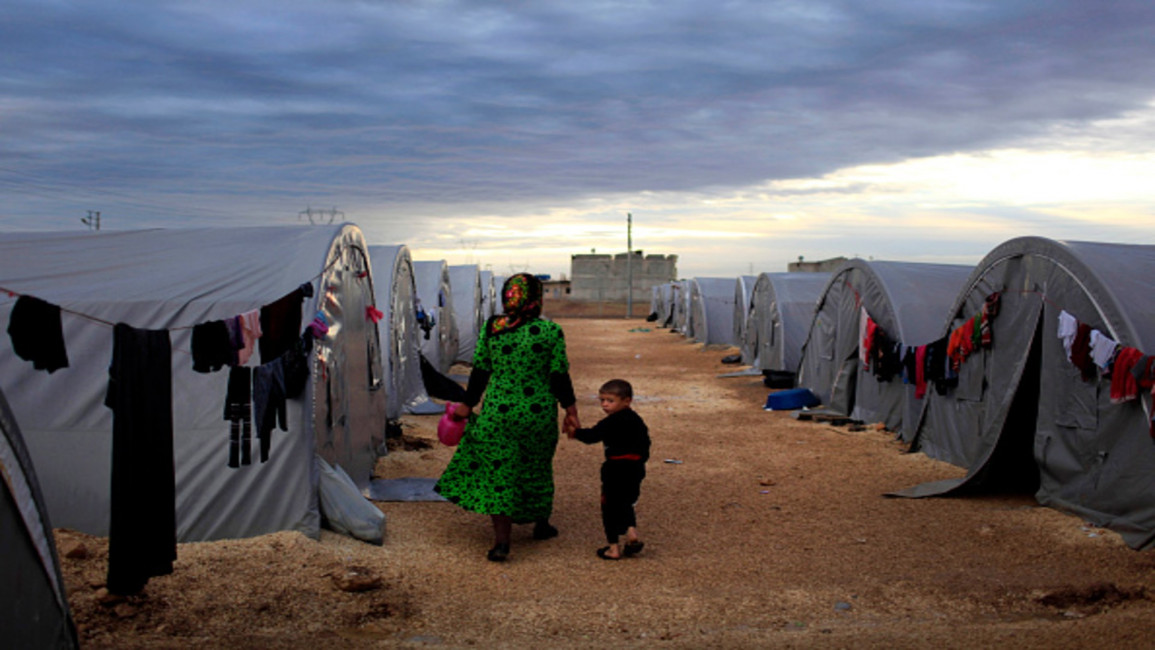Climate-conflict nexus behind decade of displacement in the MENA region: IDMC
Conflicts and natural disasters have become increasingly intertwined in the Middle East and North Africa (MENA) region and contribute to making displacement chronic and protracted, according a new report by the Internal Displacement Monitoring Centre (IDMC).
The IDMC has called on governments and humanitarian actors to develop new approaches to tackling the twin issues.
Data analysed by the IDMC found that nearly 1.5 million people have been affected by disaster displacements in the last decade.
“Reducing displacement and displacement risk in the region is a regional and global issue,” Ivana Hajzmanova, IDMC’s Regional Coordinator for MENA and Africa, told The New Arab.
“Countries in the region should lead on resolving displacement crises but they will not manage to do so without global support and commitment.”
The MENA region is highly vulnerable to weather-related disasters and the effects of climate change. The report found most disaster displacement during the last decade to have been triggered by weather-related events.
Floods triggered most displacement at the regional level, with nearly 58 per cent of the total for 2010 to 2019. The floods that affected Iran in 2019 led to the largest internal displacement than any other event at the regional level during that period.
Internally displaced people and refugees have been unevenly affected by floods and flash floods, with many of them forced to flee for a second and even a third time. The report found that floods contribute to making displacement chronic, cyclical and protracted.
Read also: 'Only God can help us': Hunger and despair wreak misery in Syria's Rukban camp
Drought was also a major driver of displacement and unrest. Hundreds of thousands of people struggled to eke out a living, and between 40,000 and 60,000 pastoral and agricultural families were forced to move to urban areas in search of alternative livelihoods. The IDMC found evidence that extended drought prior to the Arab Spring catalysed the uprising in 2011 and played a role in how Syria's civil war unfolded.
“The suburbs were at the epicentre of the first protests against President al-Assad, as the regime’s failure to alleviate the effects of drought and massive internal migration sunk in,” Hajzmanova said. “Rural communities also played a prominent role in the Syrian protests. The rural farming town of Dara’a, for example, was a hotbed of early protests after being hard hit by drought and water scarcity, with little assistance from the government.”
Because of the prevalence of conflict and violence in many countries of the MENA region, local and national authorities, as well as humanitarian aid providers, struggle to collect data on disaster displacement. This creates important gaps in knowledge of its scale, patterns, impacts and duration, the IDMC said.
The organisation developed a riverine flood displacement risk model to estimate how many people could be displaced in the future. The data is disaggregated by urban and rural areas for a better understanding of the implications for towns and cities.
The report found the collection of disaggregated data to be fundamental in understanding how many of the displaced are children, women and older people and plan for adequate assistance. Humanitarian organisations, including the United Nations, often collect cumulative data, lumping these categories into one group.
Among the 22 Arab League members, the IDMC found that only seven have developed national disaster risk reduction (DRR) strategies. About half have established national disaster loss databases, but not all are up to date or publicly available.
The report noted that “this should be a cause for concern, because the country’s reliance on international humanitarian aid has important shortfalls in terms of durable solutions and risk reduction.”
Follow us on Facebook, Twitter and Instagram to stay connected



